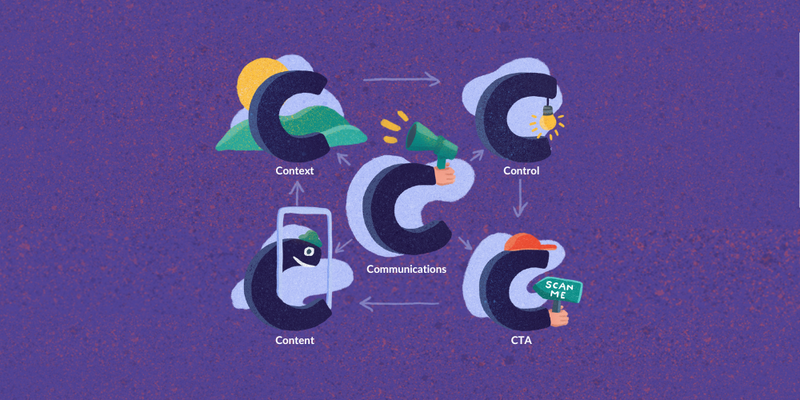How to deliver compelling AR campaigns in 2023
Honestly, it doesn't matter whether you’re in 2011 or 2023, when it comes to creating successful and compelling AR campaigns the same basic principles remain.
While its true phones have improved as have cameras and underlying software support for technologies like world tracking (tracking 3D content to a point chosen by the user in the room or immediate environment around them) through ARKit and ARCore as well as new distribution methods with WebAR. But fundamentally the same rules and approach remain the same when it comes to creating compelling content and solutions.
1. Forget the technology. No one really cares about augmented reality on its own. You have to focus on the benefit that you are providing to your end user. Your 8k plasma screen TV is impressive, but if the content is no good it’s just a big black box in my living room.
2. How you made your content isn't important. Your end user only wants to know why it exists and what it’s for. How does it make their lives easier or more fun? What’s the information, instruction or entertainment you’ve delivered?
So when it comes to creating compelling AR solutions there is a really simple framework, of 5 key principles, you can follow to make sure you are developing high-quality campaigns that provide real value to your user. It’s called the 5 Cs for Success.
1. The Context of your AR experience
First, you need the right Context: the audience you’re speaking to needs to be interested in the product or place they’re being asked to point their device at. AR alone won’t bring the horse to water!
You need to consider the context in which your user is going to be scanning your experience trigger.
- Who’s going to be scanning this kind of trigger? Who’s your user?
- What is it you’re asking them to scan? Is it a sign, or is it your product packing?
- Where are they going to be when they scan this item?
- When are they going to be scanning?
- How are they going to go about scanning it?
Put yourself in the shoes of your end user in the exact moment of assistance and ask yourself what that moment would feel like: do you have a hand free at the moment, good network connectivity and the dwell time to make it a positive scanning experience?
2. How well can you Control the scanning environment?
Once you’ve established the context your user is scanning you need to think about how well you can control this context as different environmental factors can affect the experience. Some examples of what you can control are:
- The lighting
- The image being scanned
- The distance of the user from it
- Occlusion (the ability to cover virtual AR objects with objects physically located in the room)
- The acoustics
- File size
The more control we have in that context the better the end-user experience. Remember that when it comes to AR, the experience will only be as good as what the camera on the device can see at that scanning, detection, initialisation and tracking moment.
3. A clear and effective Call to Action
Make sure the Call to Action clearly tells people HOW to scan and WHAT they are going to get for their efforts. Make sure the CTA is connected to the image or place you’re asking people to scan. The greater the distance from CTA to the scanning moment the greater the drop-off in activation. Getting the CTA right is crucial.
This is the C that on the surface seems the simplest to get right but 9/10 is left too late or not thought about deeply enough. Remember that no one is looking for (or cares about!) your AR experience so be very clear about what you are asking them to do and what they’re going to get.
4. The value of your Content to the end user
Make sure the content you are delivering is valuable to your users and could not have been more easily accessible or better delivered by just going to your website or YouTube channel. Reward them for their participation with digital value add or real-world value (sweepstakes, coupons etc.) and offer levels of immersion, engagement and interaction that make AR so powerful.
5. Nailing the Communications plan
It's not over once you’ve hit publish. Make sure the communications are right, that you’re sweating the asset and that your staff and sales people are evangelising its existence. Make sure to leverage your other comms channels to tell people about this new camera capability (through POS, Print, TVCs, social, online ads, influencers, PR, internal comms etc.). This is a new behaviour for your audience so help them understand the benefit and how they can participate.
Remember, beyond your core consumers, your internal audience and sales staff are your most powerful advocates for spreading the message. Part of that internal comms piece is also making sure everyone is aligned on the KPIs and what you’re measuring success against - is it scans, is it PR, is it sales conversion, customer sell-in for more FSDU. What’s the metric that matters and is it realistic?
Final thoughts
If you get these five ingredients right, you’ll see great levels of interaction and propensity to purchase.
Zappar, and AR, in general, is a fantastic way to deliver engagement and also deliver downloads and retention to your app. On average, users spend over 80 seconds in a Zappar Powered experience and repeat scan over three times.
Recent neuroscience research that we undertook with Mindshare and Neuro-Insight unequivocally reinforced our own real world data that we’d seen in case studies time and again over the years. This research shows that AR drives high levels of attention - 45% higher than TV & Online - and all-important memory encoding at 70% above other digital media.
Basically, it’s a great way to elicit active learning through doing or move someone down a sales & marketing funnel. Our Five C’s for Success are a proven and practical lens through which we consider all our work with our partners. Get the context, call to action and content right and you’ll be a long way down the road to ensuring success and customer satisfaction with your AR activation.
If you want to know more about creating successful AR campaigns, you can reach out to me and the team via the contact us form.
 Caspar Thykier
Caspar ThykierCo-Founder & CEO, Zappar
